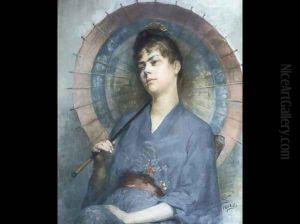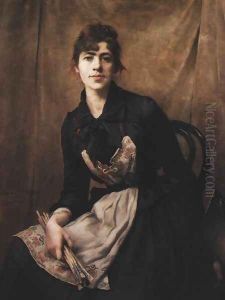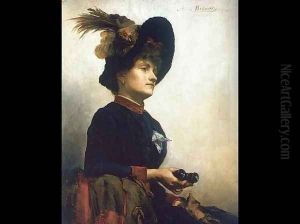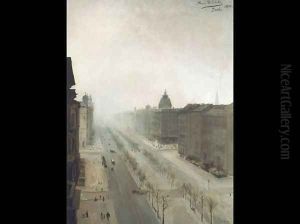Anna Bilinska-Bohdanowiczowa Paintings
Anna Bilińska-Bohdanowiczowa was a significant Polish painter known for her remarkable contributions to portrait and genre painting during the late 19th century. Born on December 18, 1857, in Złotopol, in the Russian Empire (now Ukraine), Anna was part of the Polish nobility. Her early exposure to art and culture, coupled with her family's support, played a pivotal role in shaping her future career. Despite the limited opportunities available to women in the arts during this period, Bilińska's determination and talent paved the way for her professional journey.
Bilińska-Bohdanowiczowa pursued her initial art education at the Warsaw Drawing Class, an institution that was one of the few options available to women artists at the time. Eager to further her studies in a more liberating environment, she moved to Paris in 1882. Paris, being the epicenter of the art world, offered her the exposure to avant-garde trends and the opportunity to study at the prestigious Académie Julian. This period was crucial in developing her style, characterized by a masterful grasp of light and shadow, and a nuanced understanding of human psychology, which she adeptly portrayed in her works.
Throughout her career, Anna Bilińska-Bohdanowiczowa exhibited her works in several key European cities, including Paris, Munich, and Warsaw, earning considerable acclaim. Her paintings were notable for their technical proficiency, emotional depth, and the boldness with which she approached subjects, often challenging the gender norms of her time. One of her most celebrated works, 'A Negress' (1884), not only showcased her skill in realism but also reflected her progressive views on race and social equality.
Despite her career being tragically cut short by her death from a heart condition on April 18, 1893, at the age of 36, Anna Bilińska-Bohdanowiczowa left behind a legacy that has continued to inspire generations of artists. Her dedication to her craft and her success in navigating the male-dominated art world of the 19th century have made her an enduring figure in the history of Polish art. Her works are preserved in many prestigious collections, including the National Museum in Warsaw, testament to her lasting impact and contribution to the world of art.





